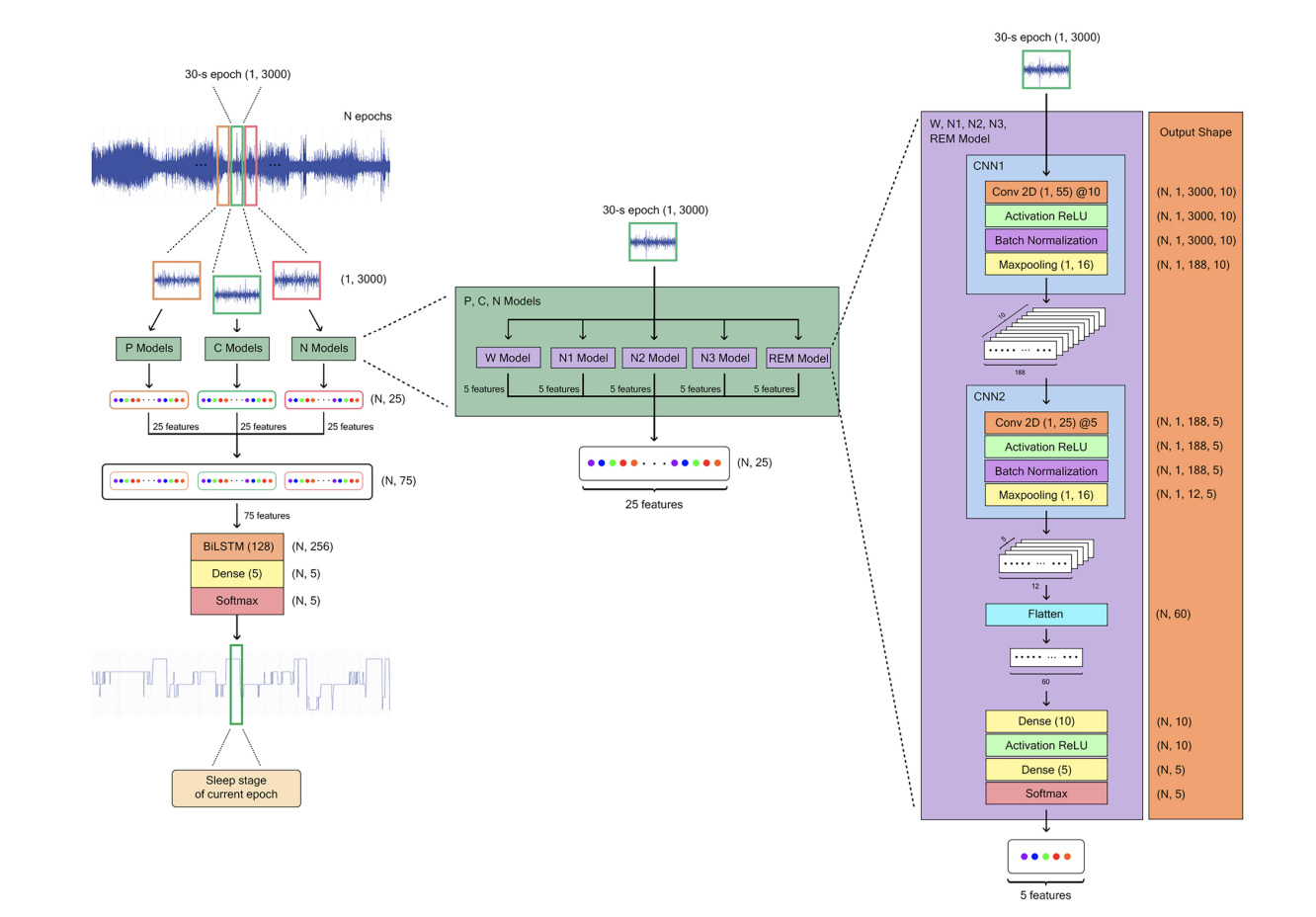Sleep research have lengthy been important to understanding human well being, offering insights into how relaxation impacts psychological and bodily well-being. Polysomnography, which is the usual for diagnosing sleep issues, makes use of an array of sensors to measure indicators throughout sleep, reminiscent of mind waves (EEG), eye actions (EOG), and muscle exercise (EMG). Regardless of its significance, the normal method to analyzing these knowledge, handbook sleep stage classification, is labor-intensive and susceptible to inconsistencies because of human error.
Researchers have turned to automated strategies to enhance accuracy and scale back the burden on sleep technicians. Present computerized methods make use of machine studying methods, from shallow studying that depends on hand-crafted options to extra superior deep studying fashions that extract options instantly from uncooked EEG knowledge. These applied sciences intention to imitate the precision of human analysts whereas surpassing their pace and endurance.
Researchers from Mahidol College launched a breakthrough generally known as ZleepAnlystNet, which presents a classy deep-learning framework designed particularly for sleep stage classification. This mannequin makes use of a ‘separating coaching’ technique, the place particular person elements are educated individually to reinforce their particular skills to acknowledge sleep levels. The system incorporates fifteen convolutional neural networks (CNNs) for characteristic extraction, every tailor-made to seize totally different features of the EEG indicators and a bidirectional long-short-term reminiscence (BiLSTM) community for sequence classification.
The efficacy of ZleepAnlystNet is notable, with the mannequin attaining an general accuracy of 87.02%, a macro F1 rating (MF1) of 82.09%, and a kappa coefficient of 0.8221, indicating glorious settlement with normal sleep stage scoring. This efficiency considerably improved over earlier fashions, which frequently struggled with particular levels like N1, the place ZleepAnlystNet manages a per-class F1 rating of 54.23%. The mannequin’s means to persistently establish different levels like Wake (W), N2, N3, and fast eye motion (REM) with F1 scores of 90.34%, 89.53%, 88.96%, and 87.40% respectively, additionally stands out.
Cross-dataset validation additional illustrates the mannequin’s robustness, displaying robust efficiency metrics even when utilized to exterior datasets, demonstrating its potential for widespread scientific use. The coaching method, which isolates and optimizes totally different mannequin elements, has confirmed essential in attaining these outcomes. This technique additionally permits for exact changes to the mannequin’s structure, guaranteeing every half performs optimally with out compromising the system’s general effectiveness.
In conclusion, ZleepAnlystNet represents an development in sleep analysis, providing a robust device for precisely and effectively classifying sleep levels. Its growth marks a step ahead within the automation of sleep evaluation and units a brand new normal for integrating deep studying applied sciences in medical diagnostics. By lowering dependency on handbook scoring and growing reliability, this mannequin paves the best way for higher understanding and therapy of sleep-related issues, promising to profoundly impression the sphere of sleep drugs.
Try the Paper. All credit score for this analysis goes to the researchers of this venture. Additionally, don’t overlook to comply with us on Twitter. Be a part of our Telegram Channel, Discord Channel, and LinkedIn Group.
Should you like our work, you’ll love our publication..
Don’t Overlook to affix our 41k+ ML SubReddit
Sana Hassan, a consulting intern at Marktechpost and dual-degree pupil at IIT Madras, is captivated with making use of expertise and AI to deal with real-world challenges. With a eager curiosity in fixing sensible issues, he brings a contemporary perspective to the intersection of AI and real-life options.

